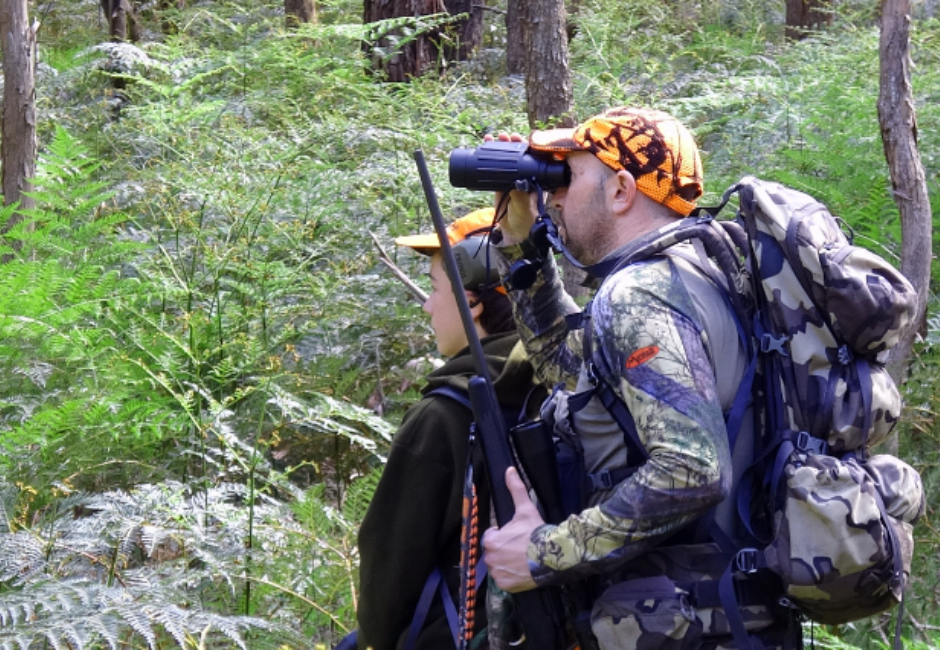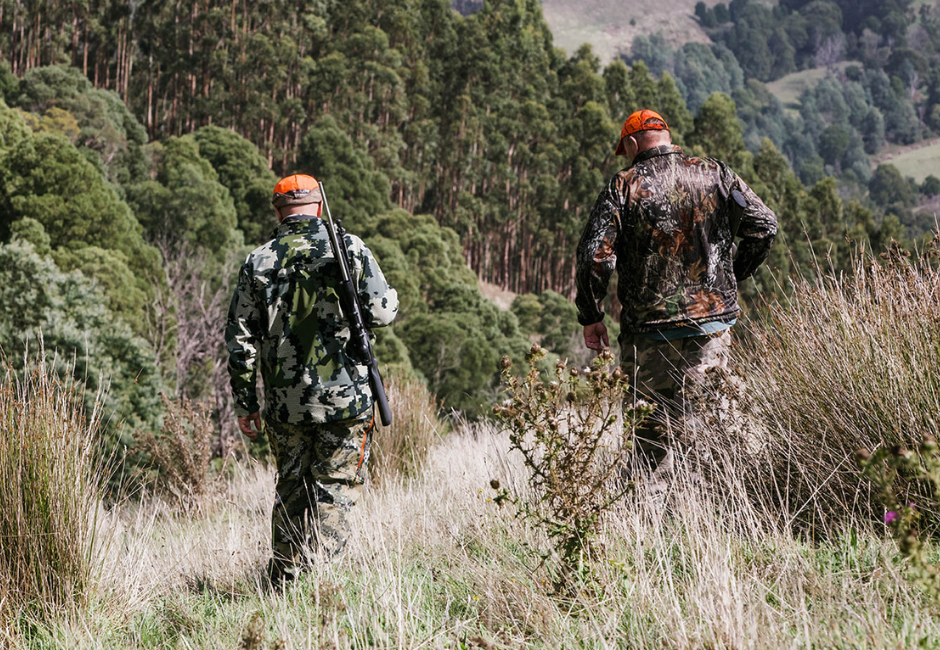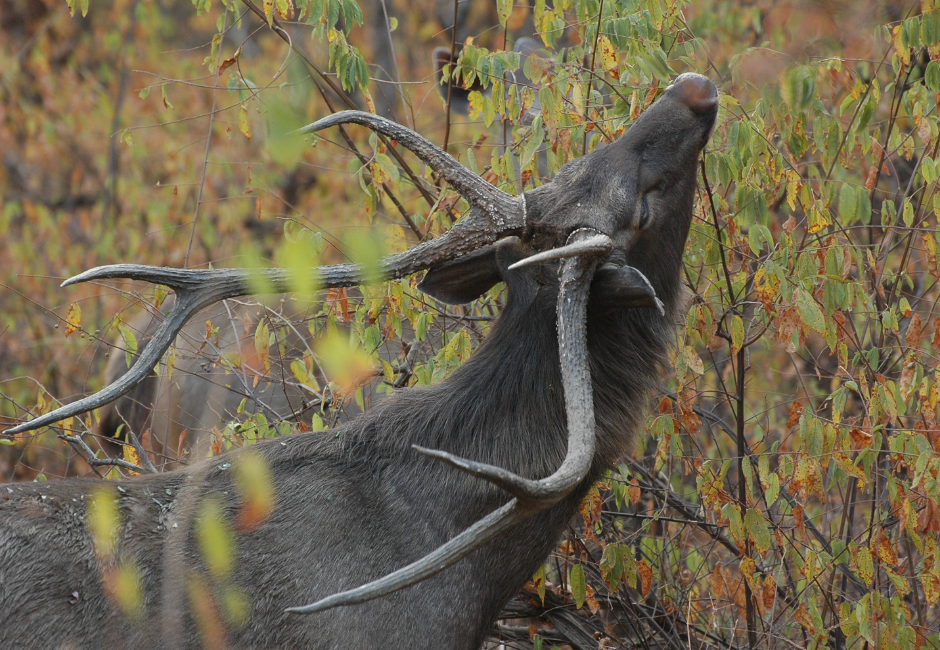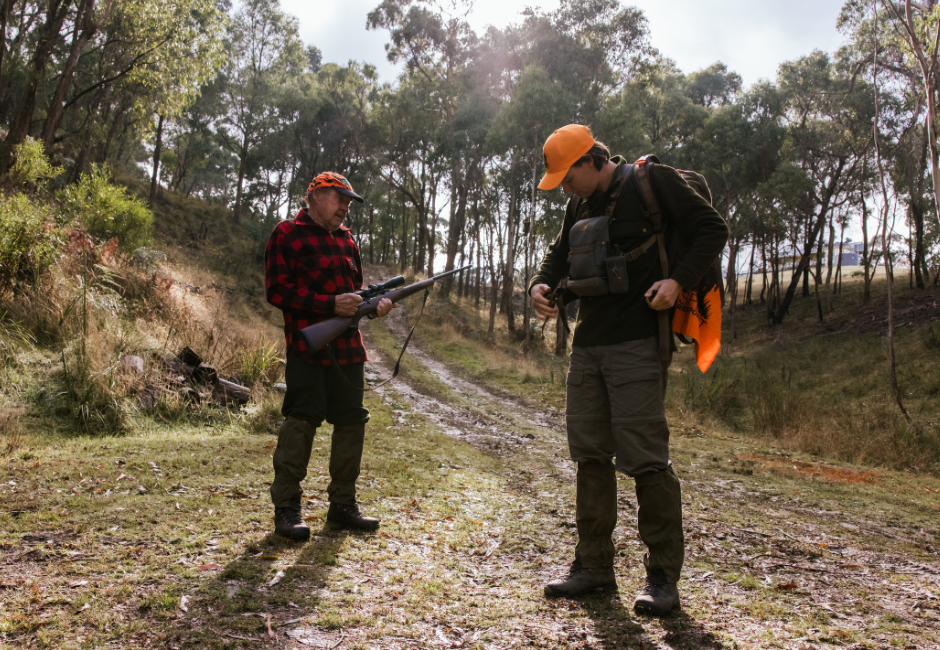Deer hunting education
There are a variety of rules that apply to recreational deer hunters, including the types of equipment permitted for use. The Deer hunting basics education module is designed to support hunters in understanding responsible, safe and sustainable deer hunting practices and the related laws in Victoria.
Education module: Deer hunting basics | Deer hunting methods |
Game deer species | Hunting plan |
Deer 101 course
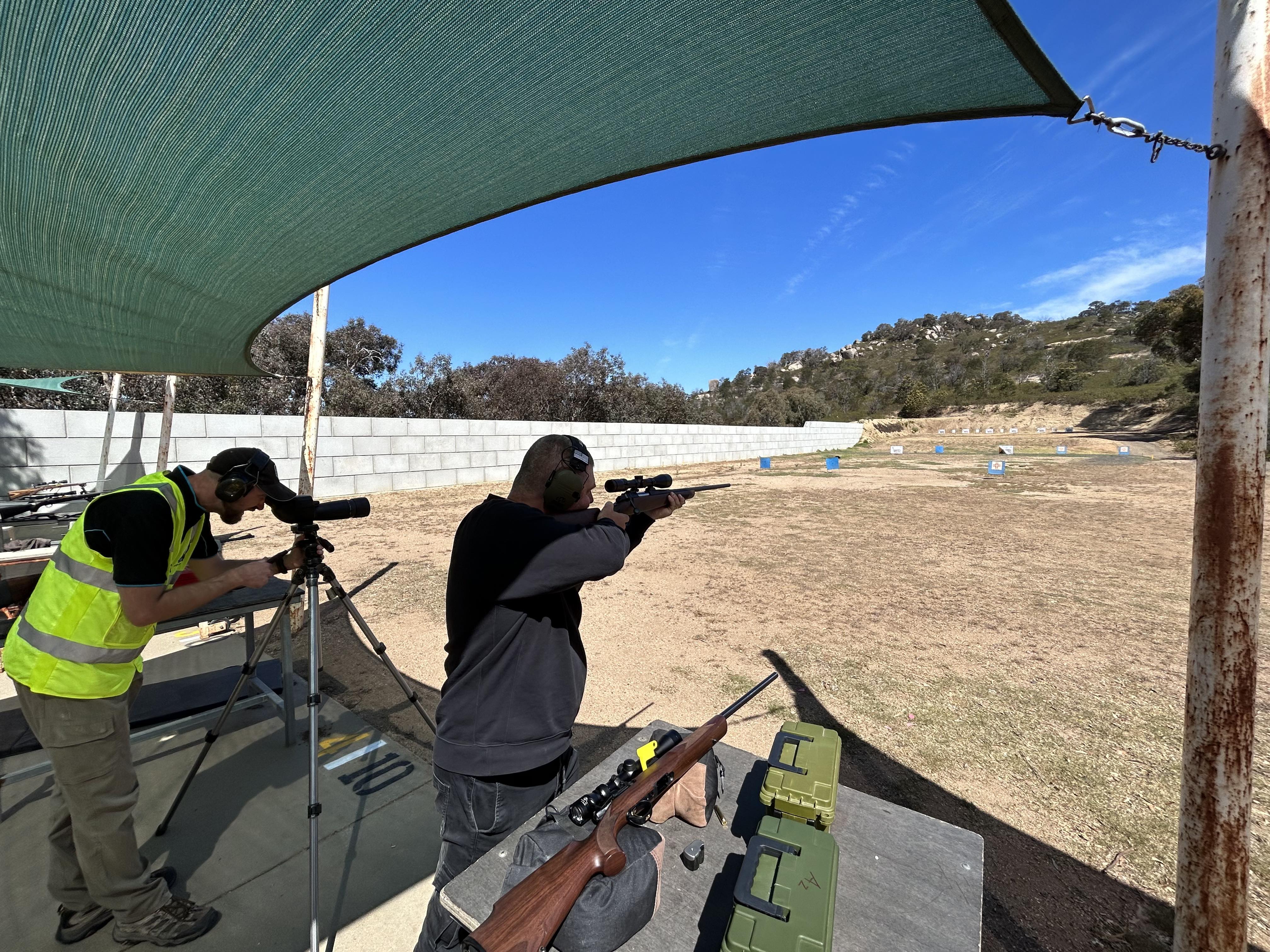 This introductory course covers theory on current hunting laws and legislation, best practices for how to hunt deer, and practical training for sighting in firearms and general firearm safety.
This introductory course covers theory on current hunting laws and legislation, best practices for how to hunt deer, and practical training for sighting in firearms and general firearm safety.
This course is run in partnership between the GMA and SSAA, and is perfect for hunters who want to learn practical and theriotecal tips on the things you need to do to be a consistently successful deer hunter.
For more information and to book a course, visit: SSAA Victoria
Victorian hunter education course
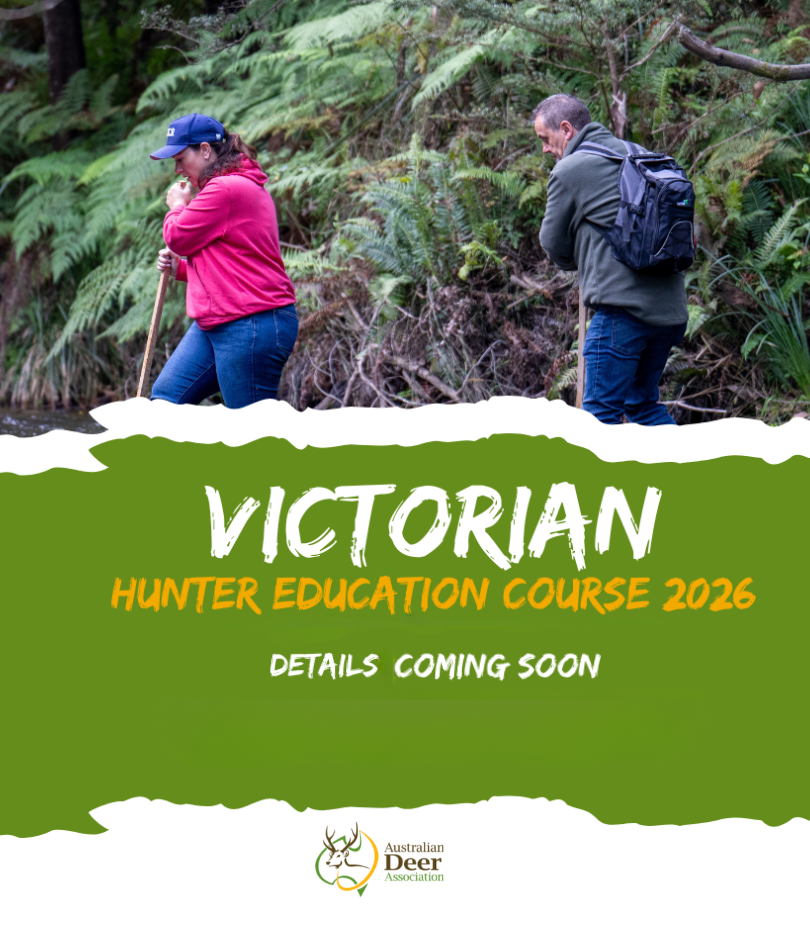 The Australian Deer Association's Victorian Hunter Education Course 2026, is a comprehensive residential weekend program located at Forest Edge in Neerim East, Victoria.
The Australian Deer Association's Victorian Hunter Education Course 2026, is a comprehensive residential weekend program located at Forest Edge in Neerim East, Victoria.
This course is a unique blend of theory and hands-on practical sessions presented by the Australian Deer Association and the Game Management Authority, tailored for both new and experienced hunters.
Enrol in the Victorian Hunter Course and learn about deer hunting regulations and safety practices in Victoria.
Victorian Hunter Education Course - Australian Deer Association
Equipment
There are minimum legal standards for firearms and bows used to hunt deer in Victoria. These standards depend on the type of deer species and equipment, and apply to recreational hunting on public and private land. The use of spotlights including thermals to recreationally hunt game deer is not allowed in Victoria except for h.and-held thermo-imaging devices during the daytime provided they are not affixed or attached to the firearm.
Hunting with a firearm
When using a firearm to hunt deer, use the below table to check for minimum calibre size and projectile weights. If using a drilling, ensure all three barrels are of the minimum calibre or greater. All shotguns must have front and rear iron sights, not standard beaded type sights, or a scope/reflex sight fitted.
Approved firearms, calibres and projectile weights
| Firearm | Fallow and Chital Deer | Sambar, Rusa and Red Deer | Non-game Deer* |
|---|---|---|---|
| Centre-fire rifle | A minimum calibre of .243" (6.17mm) with a minimum projectile weight of 80 grains (5.18 grams). | A minimum calibre of .270" (6.85mm) with a minimum projectile weight of 130 grains (8.45 grams). | A minimum calibre of .270" (6.85mm) with a minimum projectile weight of 130 grains (8.45 grams). |
| Muzzle-loading rifle | A minimum calibre of .38" (9.65mm) with a minimum projectile weight of 200 grains (12.96 grams) | A minimum calibre of . 45" (11.45mm) with a minimum projectile weight of 230 grains (14.91 grams). | A minimum calibre of .45" (11.45mm) with a minimum projectile weight of 230 grains (14.91 grams) |
| Smooth-bore firearm | A minimum bore of 20 and a maximum bore of 12, using a single solid projectile with a minimum weight of 245 grains (15.88 grams); SG’s (buck shot) must not be used. The firearm must be fitted with a front and rear iron sight (other than a beaded sight or sights), a telescopic sight, or a reflex sight. | ||
| *e.g Sika Deer | |||
Check out the Laws and equipment section of the Deer hunting basics education module for more information on hunting with a firearm.
Hunting with a bow
When using a bow or crossbow to hunt deer, use the below table for minimum draw weights and arrow requirements. Ensure all broadheads have a minimum of two sharpened cutting blades.
Bow and crossbow - Minimum legal requirements
| Bow | Sambar Deer, Rusa Deer and Red Deer | Hog Deer, Fallow Deer and Chital Deer |
|---|---|---|
Long, recurve and compound bow | A minimum draw weight of 50 pounds (22.5 kilograms), using an arrow fitted with a broadhead having a combined minimum weight of 400 grains (26 grams) and at least two sharpened cutting blades. | A minimum draw weight of 45 pounds (20 kilograms), using an arrow fitted with a broadhead having a combined minimum weight of 350 grains (22.5 grams) and at least two sharpened cutting blades. |
| Crossbow | A minimum draw weight of 150 pounds (68 kilograms), using a bolt fitted with a broadhead having a total minimum weight of 400 grains (26 grams) and at least two sharpened cutting blades. | A minimum draw weight of 120 pounds (54.4 kilograms), using a bolt fitted with a broadhead having a total minimum weight of 350 grains (22.5 grams) and at least two sharpened cutting blades. |
Check out the Laws and equipment section of the Deer hunting basics education module for more information on hunting with a bow.
Shooting skills
Hunters need to ensure they know their maximum shooting skills distance, have a correctly sighted in rifle and practice regularly to increase their success rate and significantly reduce wounding.
Sighting in
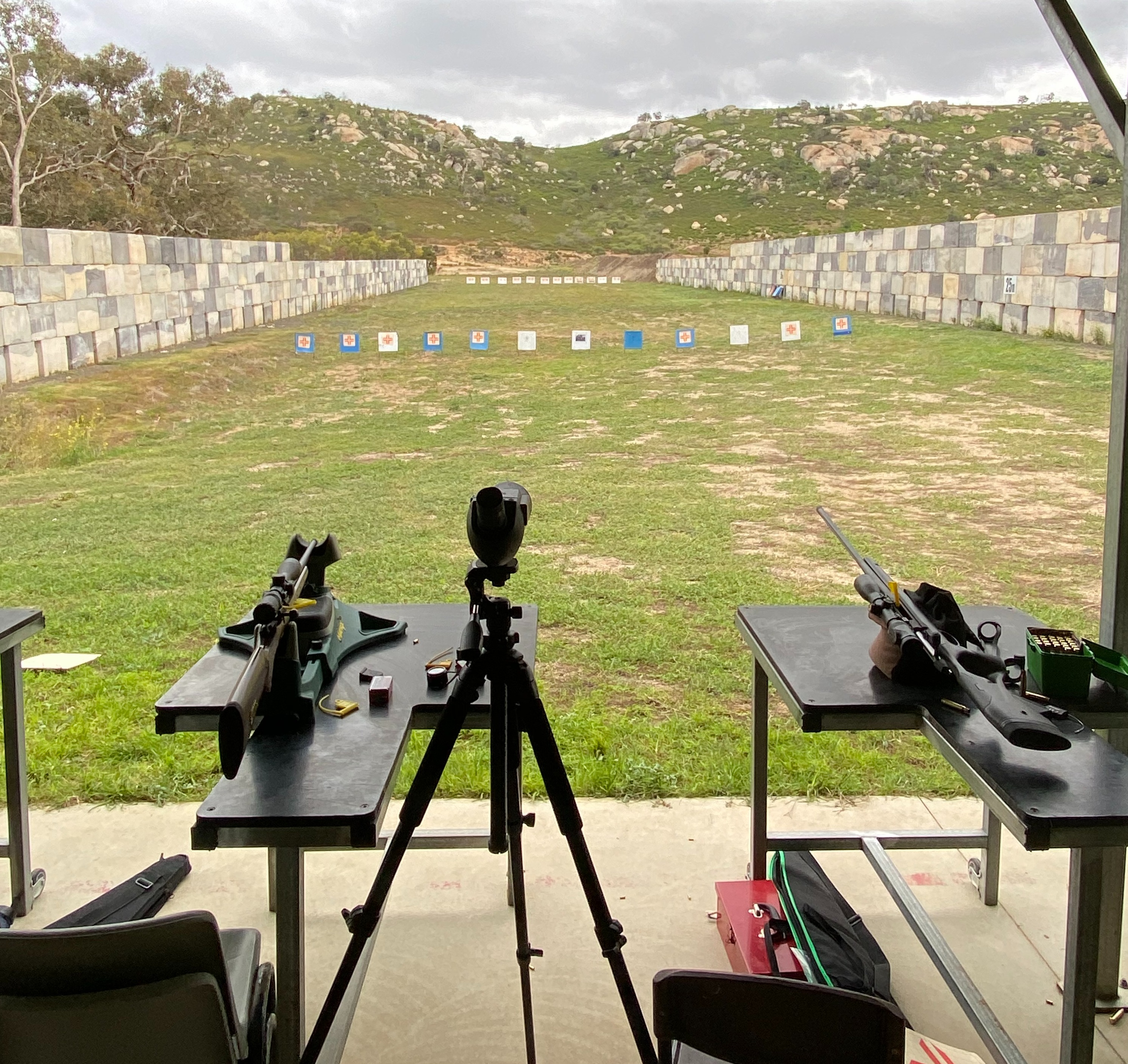 Sighting in a rifle involves matching the crosshairs of an optic to the path of the bullet at a known distance. This will vary depending on a range of factors, such as temperature and ammunition type. Rifles should be sighted in with the same ammunition that hunters intend to use in the field.
Sighting in a rifle involves matching the crosshairs of an optic to the path of the bullet at a known distance. This will vary depending on a range of factors, such as temperature and ammunition type. Rifles should be sighted in with the same ammunition that hunters intend to use in the field.
Check out the Shooting skills section of the Deer hunting basics education module for more information on how to sight in rifles.
Practice
It is important for hunters to practice by replicating the shots they are likely to be taking when hunting deer in the field. The furthest someone can competently hit an intended target is called their effective shooting skills distance.
Responsible hunters know their maximum shooting skills distance and limit their shots accordingly.
Check out the Shooting skills section of the Deer hunting basics education module for information on practicing with rifles and a step-by-step guide on how to test for an effective shooting skills distance.
Hunting methods
There are many different styles and methods of hunting deer in Victoria. The most common are stalking, stands and blinds, the use of calls and the use of gundogs or hounds. Some of these methods have additional laws and licence requirements.
For more information, check out the Hunting methods section of the Deer hunting basics education module and the Hunting methods webpage.
Retrieval and dispatch
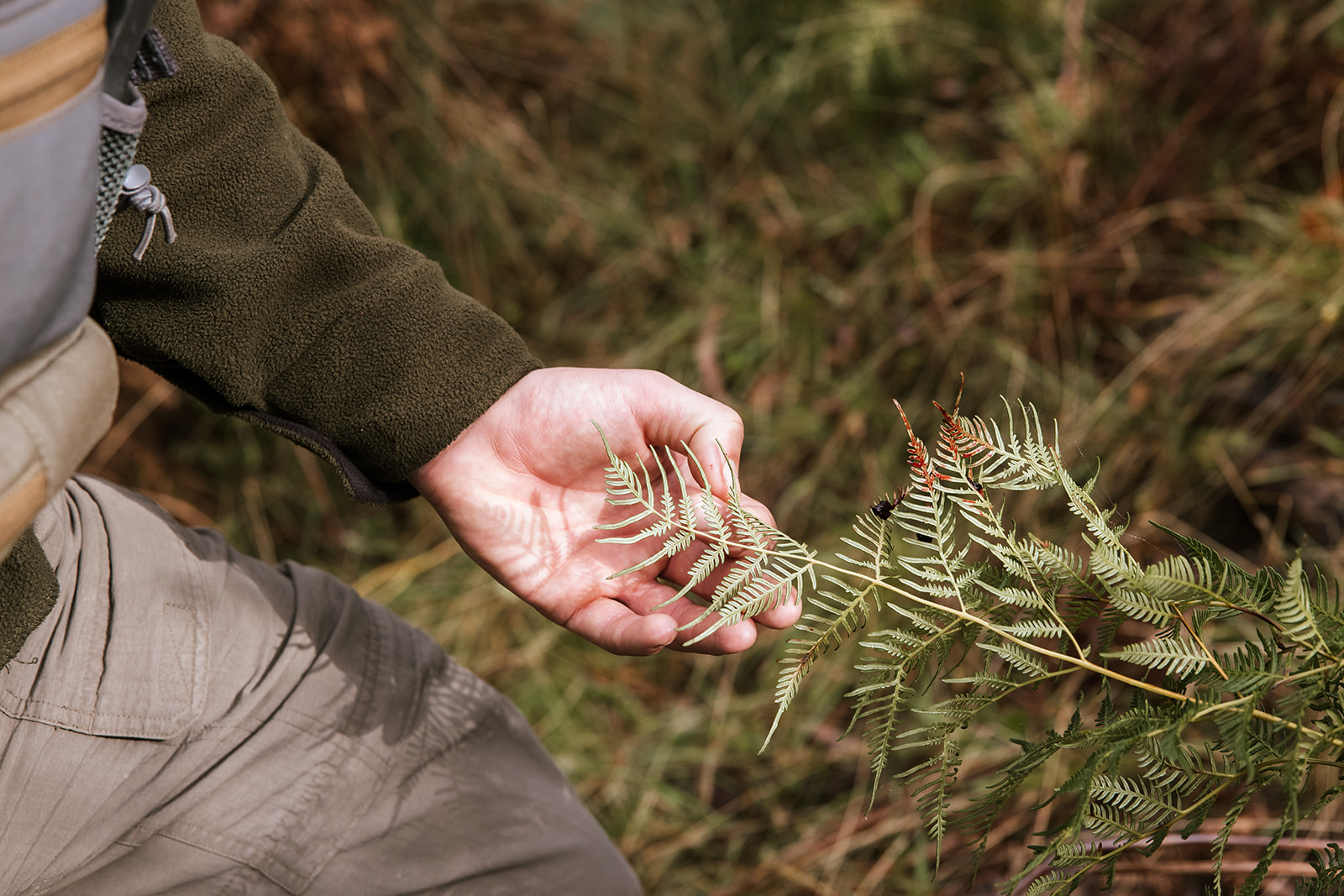 Hunters should make all reasonable attempts to locate any deer they shoot at and ensure the deer is humanely dispatched if the deer is still alive. Carrying the deer out of the bush, and utilising the harvest is part of being a responsible hunter.
Hunters should make all reasonable attempts to locate any deer they shoot at and ensure the deer is humanely dispatched if the deer is still alive. Carrying the deer out of the bush, and utilising the harvest is part of being a responsible hunter.
Trailing and recovery of shot deer
The use of a well-trained gundog or deer hunting dog, can improve hunters' ability to trail and recover shot deer. Hunters should track shot deer for a minimum of 150m (even if they miss) and look for blood, hoof tracks, pushed over vegetation and disturbed leaf litter.
Dispatching shot deer
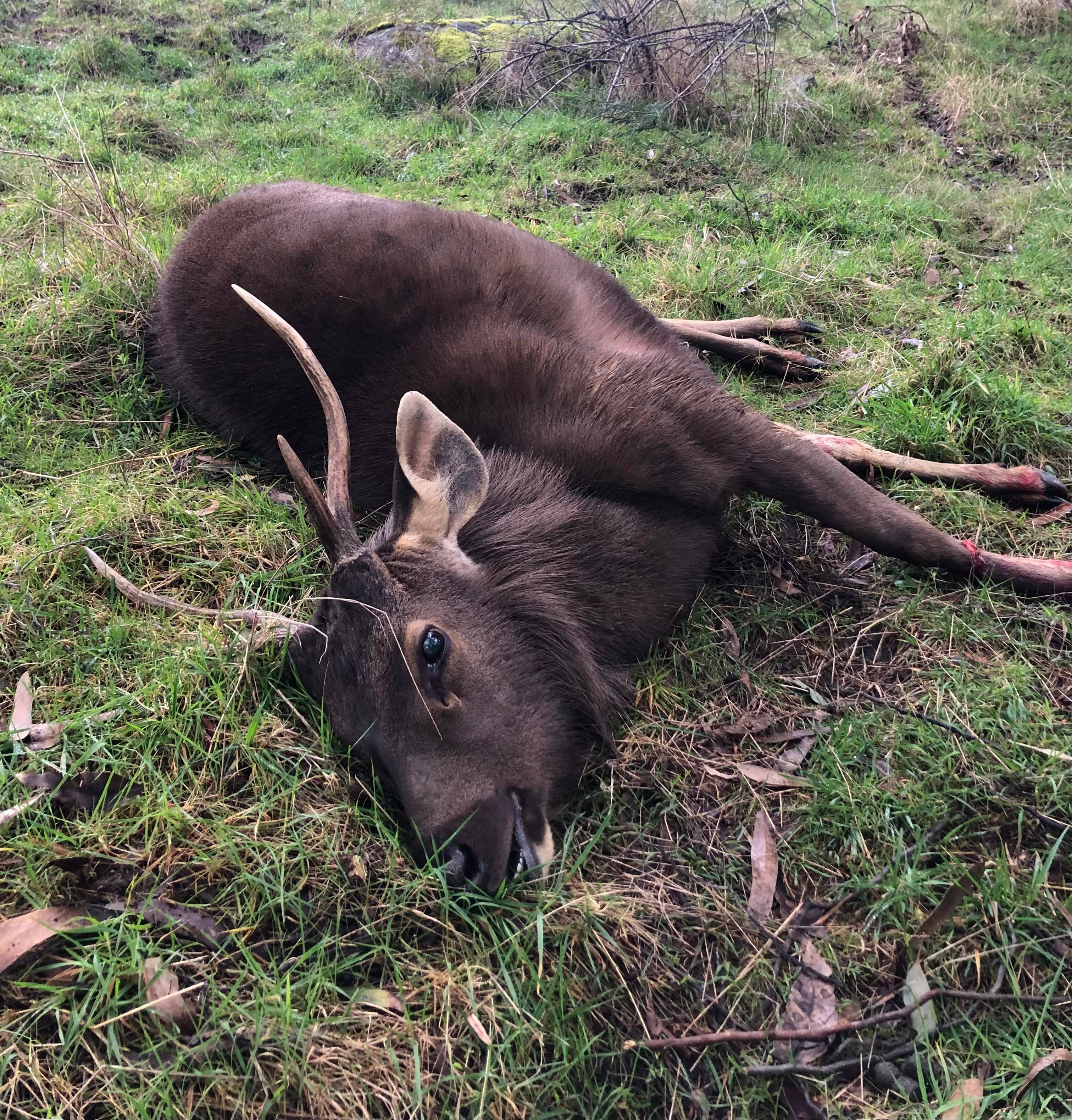 Always approach a downed deer with caution. There is a chance that the animal could still be alive and needs to be quickly dispatched. If the animal is still alive, it should be finished with a shot to the base of the ear, or to the heart/lung area.
Always approach a downed deer with caution. There is a chance that the animal could still be alive and needs to be quickly dispatched. If the animal is still alive, it should be finished with a shot to the base of the ear, or to the heart/lung area.
Check out the Recovery of game section of the Deer hunting basics education module for more information on retrieving and dispatching shot deer.
Page last updated: 10 Sep 2025
